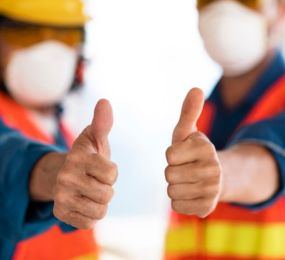In the ever-evolving landscape of modern workplaces, prioritizing safety isn't just a legal obligation; it's a strategic imperative. Building a strong safety culture goes beyond compliance; it involves creating an environment where safety is ingrained in every aspect of organizational operations. Here are key steps to foster a robust safety culture:
1. Leadership Commitment: The foundation of a strong safety culture starts at the top. Leaders must visibly and consistently demonstrate their commitment to safety. This involves not only words but also actions that prioritize safety in decision-making and resource allocation.
2. Clear Communication: Effective communication is at the heart of a strong safety culture. Clearly communicate safety policies, procedures, and expectations. Use multiple channels, including meetings, posters, and digital platforms, to ensure that everyone is well-informed.
3. Employee Involvement: Empower employees to be active participants in building a safety culture. Encourage them to voice safety concerns, provide feedback, and actively engage in safety initiatives. When employees feel valued and involved, they are more likely to embrace safety as a shared responsibility.
4. Training and Education: Regular and comprehensive training is essential for creating awareness and understanding of safety protocols. Ensure that employees are well-trained on safety procedures, emergency responses, and the proper use of safety equipment.
5. Recognition and Rewards: Acknowledge and celebrate safety achievements. Recognizing individuals and teams for their commitment to safety reinforces the importance of a safe working environment. Implementing a reward system encourages employees to actively contribute to a strong safety culture.
6. Continuous Improvement: Regularly assess and reassess safety protocols. Encourage a culture of continuous improvement by seeking feedback, conducting safety audits, and promptly addressing identified issues. A dynamic safety culture evolves with changing circumstances and incorporates lessons learned from incidents or near misses.
Building a strong safety culture is an ongoing process that requires dedication and collaboration. By fostering a workplace where safety is not just a set of rules but a shared value, organizations can create an environment where employees thrive, risks are minimized, and organizational excellence is achieved.
To register or learn more about the Forum please check here: https://www.leadventgrp.com/events/hse-excellence-for-energy-and-utilities/details
For more information and group participation, contact us: [email protected]
















